If you want to escape the crowds of Iceland, there is no better place than the wild, northwest corner of the island – the Hornstrandir Nature Reserve. The Hornstrandir Nature Reserve operates under strict preservation rules and was established in 1975 to protect the Arctic Fox and the large colonies of seabirds that nest in the dramatic cliffs.
While it is possible to do day-hikes from various points on the peninsula (there are several tours that offer this), undertaking a multi-day hike will allow you to experience the amazing scenery that exists in every corner of the Hornstrandir Nature Reserve. It will also give you the chance to spot one of the elusive foxes and enjoy the eternal midsummer twilight – far away from the tourist crowds.
Table of contents
The Basics
Health
The Route
Accommodation
Food
Interesting Facts
Iceland Travel Articles
The basics
How to get to Hornstrandir: The closest major city to the Hornstrandir Nature Reserve is Ísafjörður, Iceland. You can fly to Ísafjörður directly from Reykjavik (it is a very interesting landing approach!) or drive. It takes approximately five hours and forty minutes to drive the 453km from Reykjavik to Ísafjörður, following Route 61.
Start of Hornstrandir Nature Reserve Hike: Ísafjörður. Ísafjörður has a decent sized supermarket where you can purchase regular groceries and protein bars. You will need to bring dried trekking food with you if you plan to eat that. Gas canisters can be purchased at the gas station. From Ísafjörður, you will need to arrange a boat transfer to Hornstrandir (preferably in advance). Note that there are limited departures and not every site is serviced every day.
Accommodation: The main type of accommodation at Hornstrandir is self-supported camping. If you are looking for a bit more luxury, there is the option of a hostel at “The Doctor’s House” in Hesteryi and a hut at Hornbjargsviti Lighthouse (if the caretaker is there).
Costs: Currently, the campsites in Hornstrandir are free so the only costs are the boat transfers from and to Ísafjörður. The prices depend on exactly where you want to be dropped off and picked up, but for this specific route they run to about USD$200 return.
Length Of The Trek: 5 Days for the route outlined here. It is possible to plan a longer route, but keep in mind you must only stay in designated campsites.
When To Go To Hornstrandir Nature Reserve: The boats from Ísafjörður to Hornstrandir operate only between June and August. This is the recommended hiking window for this part of Iceland.
Trekking in Hornstrandir Nature Reserve takes you to a very remote part of Iceland that should not be undertaken by inexperienced hikers. The trails are marked using a range of methods, from clear tracks through the vegetation, to large stone cairns or natural wooden stakes (that, unfortunately, are the same colour as the landscape) stuck into the ground. Weather can change very quickly and can be extreme. You should know how to navigate with a GPS and/or compass/map in case of fog.
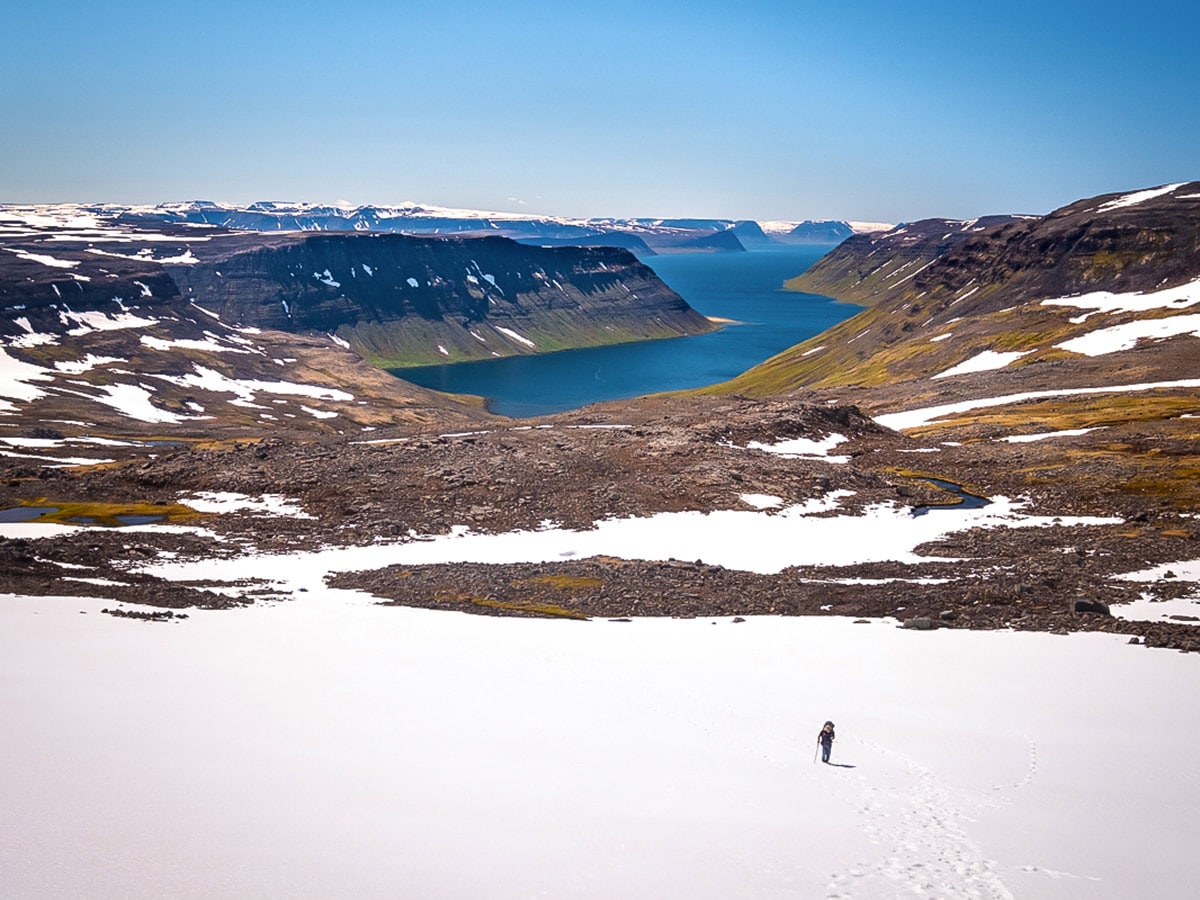

Health
You must be fit and accustomed to carrying a full backpack for several days in order to undertake this trek. You need to be self-sufficient and bring everything with you from Ísafjörður, but water is plentiful and safe to drink directly from the streams (you only need to carry 1L at a time).
You must be prepared for extreme weather. Make sure your tent is able to withstand strong winds (several were destroyed in one night when I was there) and ensure your sleeping bag/sleeping pad will keep you warm enough. Even though it is summer, the changeable weather means you should carry several layers of clothing, including a base layer, mid-layer and a quality waterproof/windproof complete outer layer. Waterproof shoes will also come in handy!
If you suffer from vertigo, this may not be a good trek for you. The Hornbjarg has some of the highest cliffs in Iceland (think more than 200m) and a sheer drop into the ocean, while other parts of the route involve extremely steep ascents/descents on gravel.
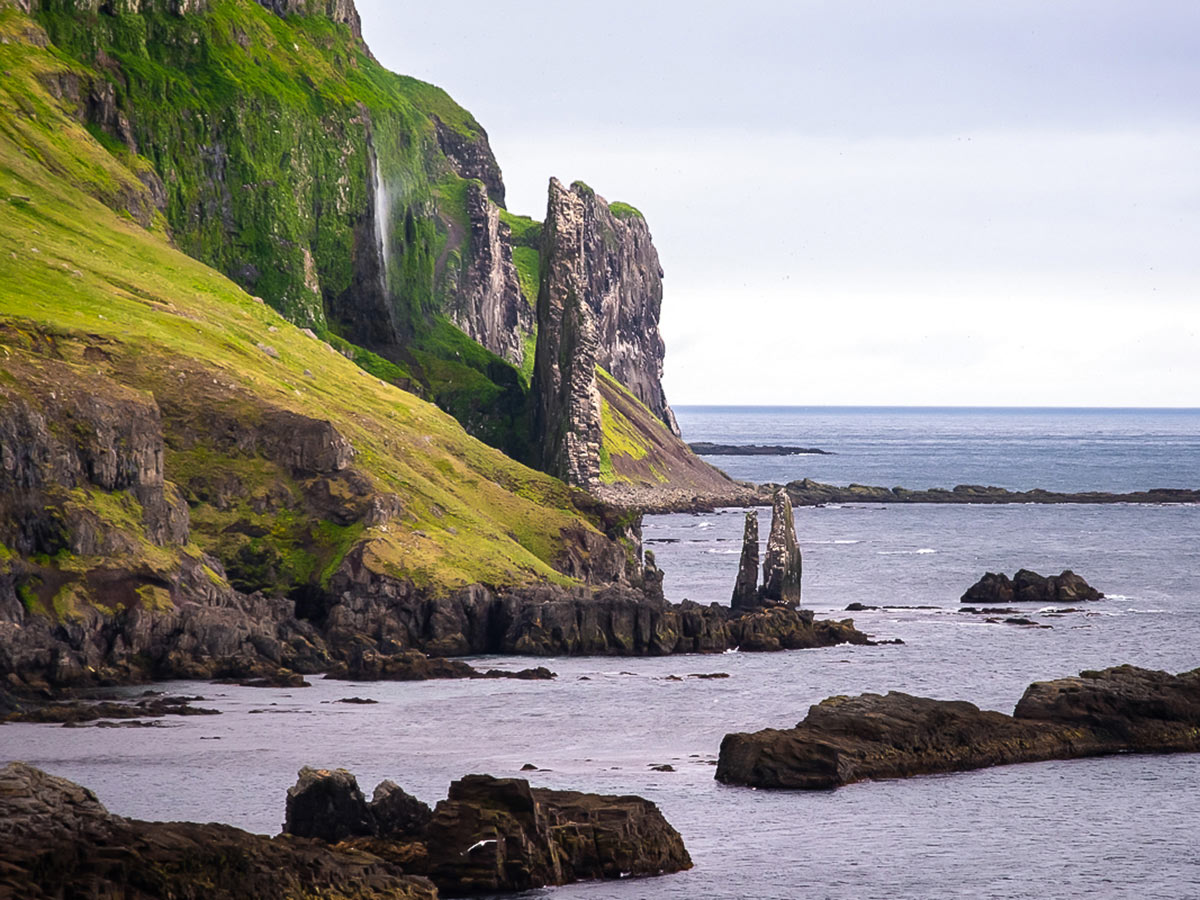
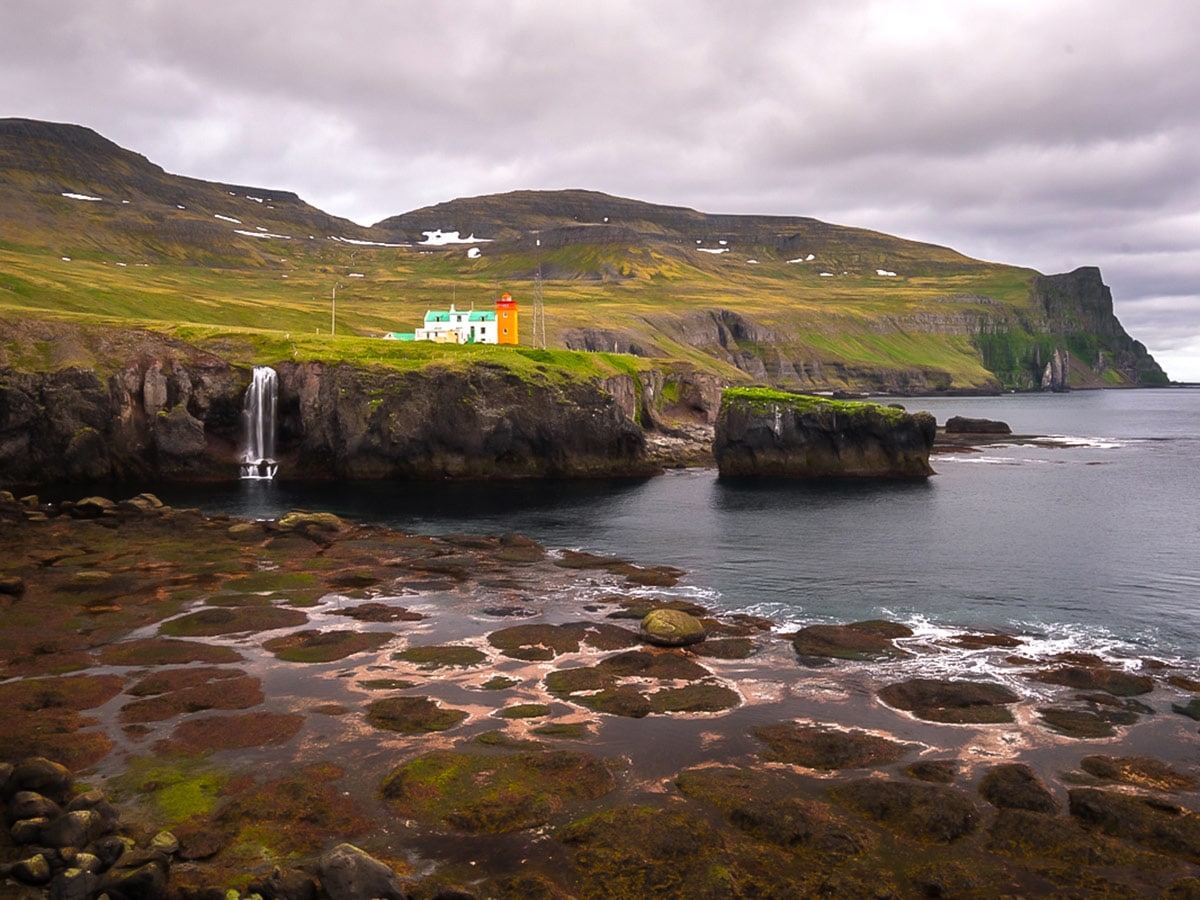
Route for hiking in Hornstrandir
Iceland’s Hornstrandir Hiking Map
The route outlined below starts at Veiðileysufjörður and comes around in a U-shape to end at Hesteryi. There is a pass (no more than 400m elevation gain) on each of the days, both of which offer stunning views if the weather is kind.
Hiking in Hornstrandir, you can expect some stunning views, encompassing everything from bright green vegetation and bare rocky terrain to the deep blue of the ocean. There are also several rivers to ford (river shoes and neoprene socks are a good idea), and you may even need to strip down to your underwear if you don’t want to get wet.
With 5 days to complete the route, there is enough time to enjoy the area without racing through it. That being said and if time permits, it is a good idea to schedule extra days to accommodate bad weather or some day hikes. Chat with the ranger at the Hornvík campsite for the latest trail conditions and further ideas for short explorations.
Finally, don’t forget to bring some money so that you can enjoy a well-earned, freshly brewed coffee and pancakes at “The Doctor’s House” in Hesteryi before heading back to Ísafjörður.
Iceland’s Hornstrandir Nature Reserve Trek Itinerary
Day 1: Boat transfer from Ísafjörður to Veiðileysufjörður – hike to Hornvík campsite. 10km.
Day 2: Hornvík campsite – Hornbjargsviti Lighthouse via Hornbjarg. 17km.
Day 3: Hornbjargsviti Lighthouse – Hornvík campsite. 10km.
Day 4: Hornvík campsite – Hlöðuvík. 15km (including detour below).
Day 5: Hlöðuvík to Hesteryi – boat transfer to Ísafjörður. 15km.
Route options:
- Take an extra day at the Hornvík campsite so that you have more time to explore Hornbjarg. It is a truly spectacular landscape and deserves more than a day to appreciate it fully.
- On the way from the Hornvík campsite to Hlöðuvík, take the detour out to Kirfi to see the spectacular cliffs and nesting sites of Haelavikurbjarg.
- Spend an extra day at Hesteryi so that you can enjoy the amazing dinner at “The Doctor’s House” and explore the area further.
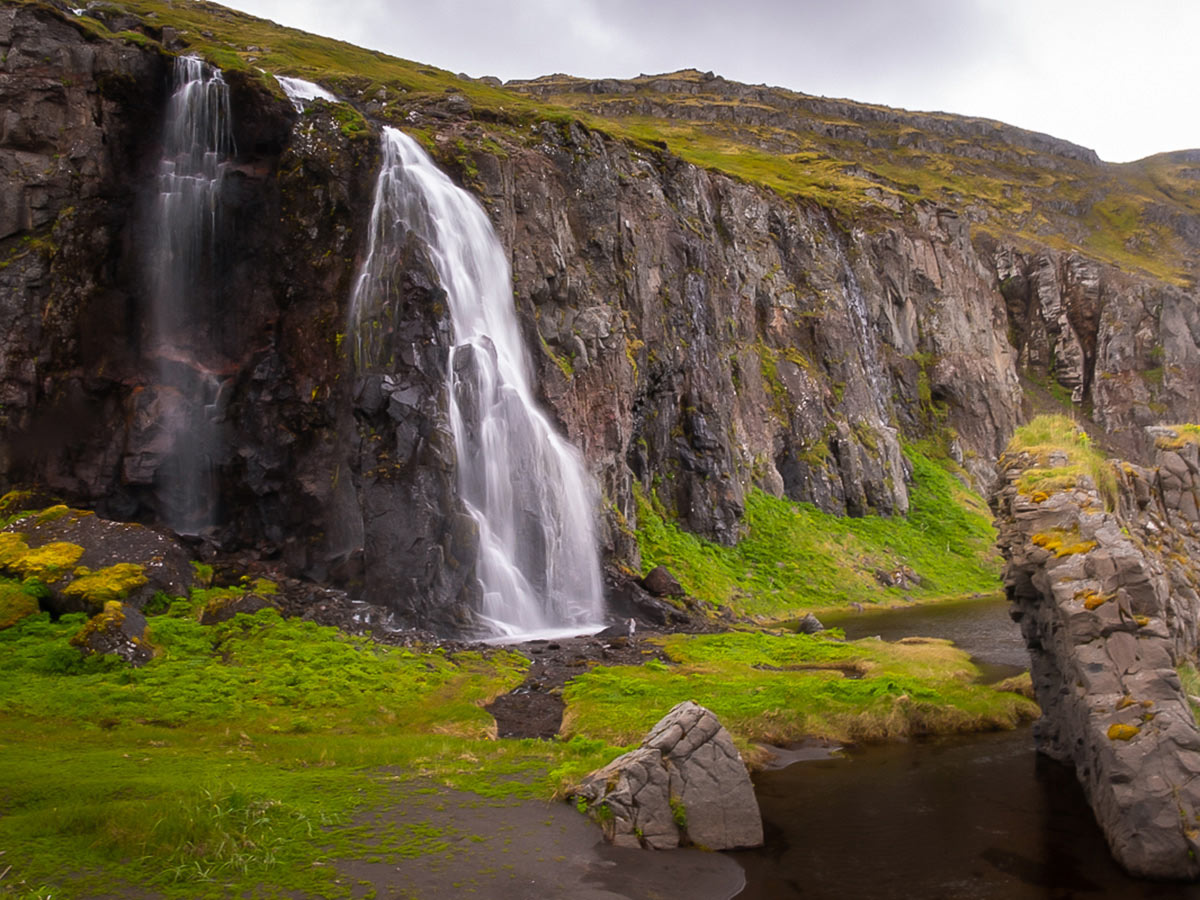
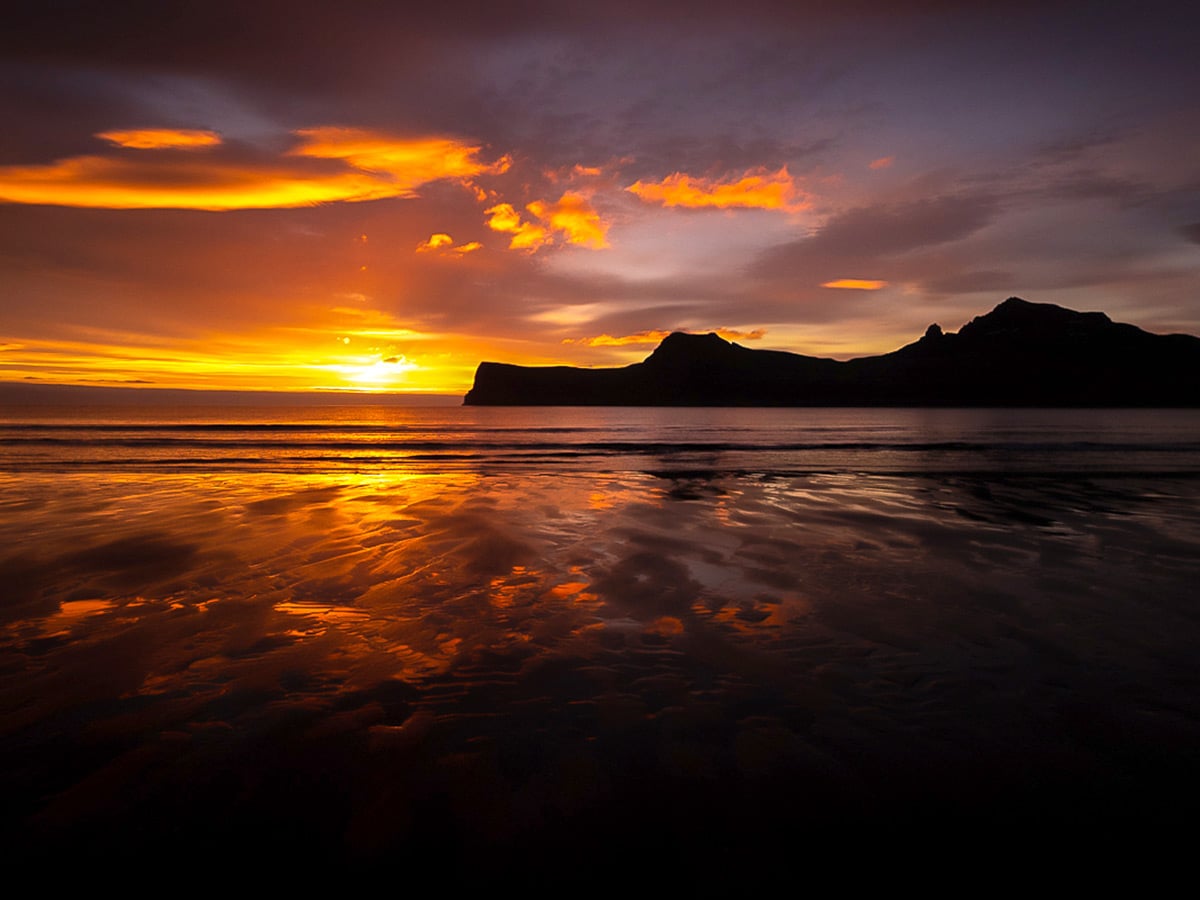
Accommodation in Hornstrandir
This is a remote trek with only two possibilities for accommodation besides camping – “The Doctor’s House” in Hesteryi and a hut at Hornbjargsviti Lighthouse. You should book well in advance if you plan to use either of these options as space is limited and the caretaker is not always at Hornbjargsviti Lighthouse.
Camping is only permitted in designated campsites (where there are toilet facilities) and strictly forbidden elsewhere. Your tent should be sturdy and able to withstand high winds and rain.
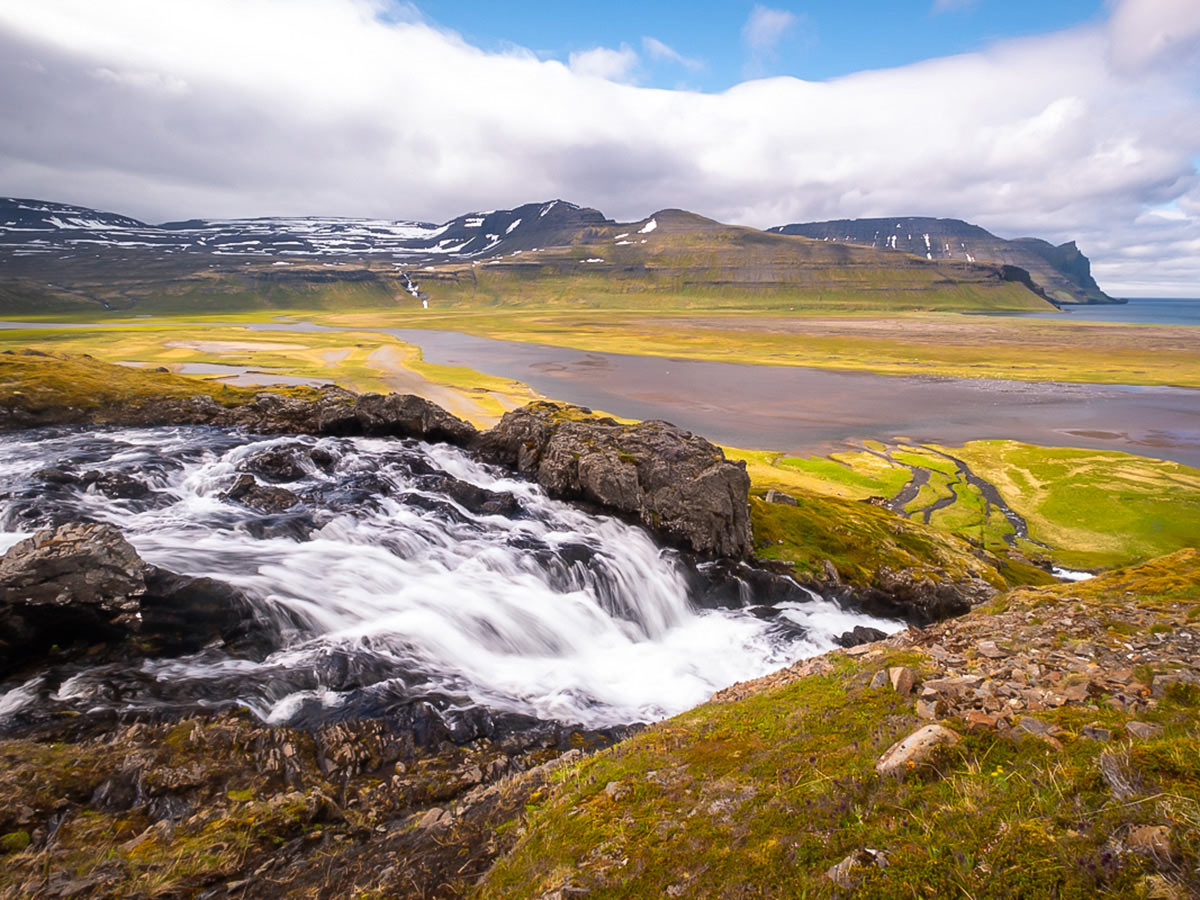
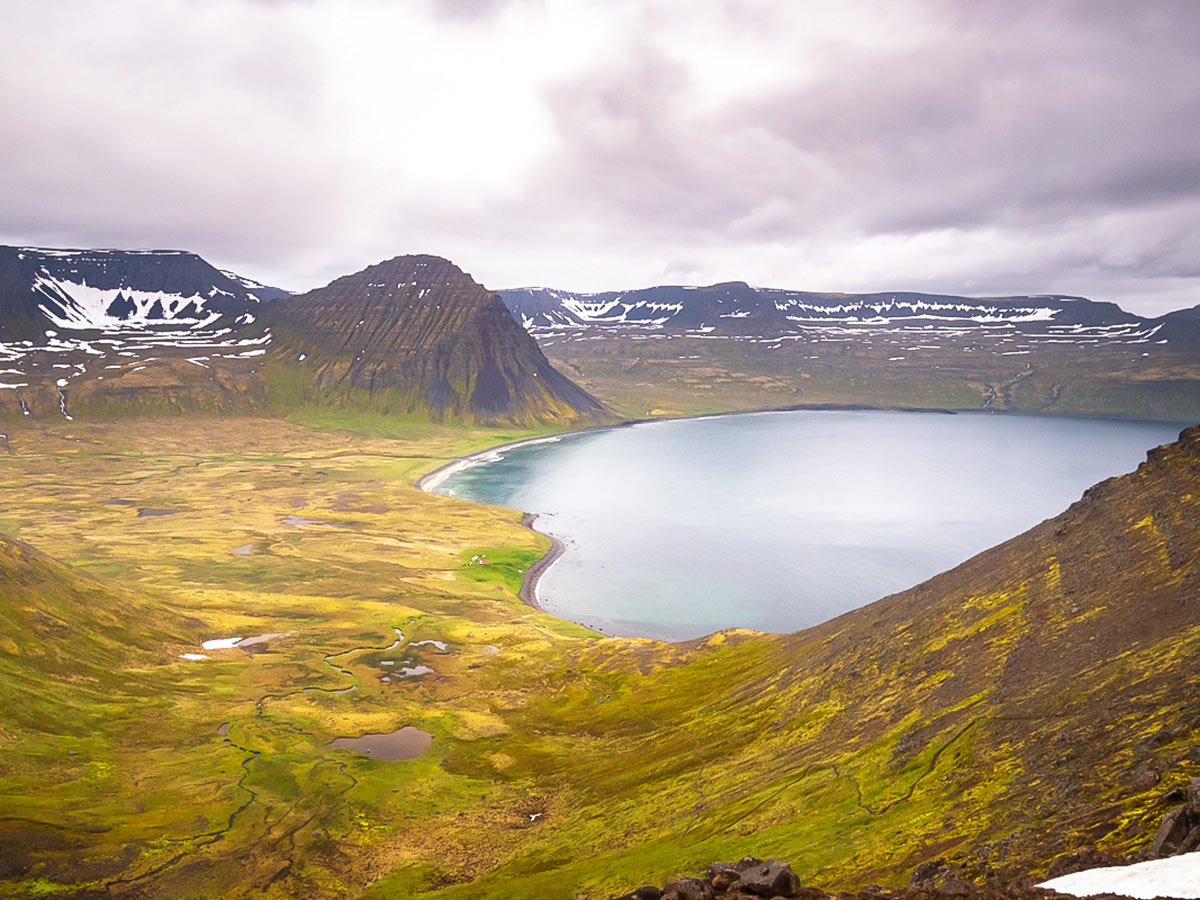
Food
Food is only available at The Doctor’s House” in Hesteryi. If you stay an extra night in Hesteryi, and even if you camp, it is definitely worth the money to have dinner there! You must bring everything else with you or arrange for a resupply at one of the drop-off points for the boat transfers.
Interesting Facts About Hornstrandir Nature Reserve
- The Hornstrandir Nature Reserve covers 220 square miles of wilderness in the Westfjords, in the northwest of Iceland.
- This region has a long and fascinating history, and has been inhabited by a sparse population since the Middle Ages. This lonely, wild peninsula was often used as a refuge for outlaws, who would flee to the region in the hope of catching a passing boat and starting a new life abroad. The reserve has been uninhabited since the 1950s.
- Hornstrandir Nature Reserve can only be accessed by boat, and there are no roads across the reserve.
- Hornstrandir Nature Reserve is home to over 250 different species of flowering plants and ferns, many of which are unique to the reserve or the Westfjords.
- Hornstrandir is home to Iceland’s only native mammal – the Arctic Fox. A hunting ban is in place across the reserve in order to protect the fox population.
- This region is also home to an important population of birds, including puffins and guillemots. Hornstrandir includes two of the largest bird cliffs in Europe, and is an important habitat for the fragile bird population.
- Hornstrandir Nature Reserve includes some of Iceland’s prettiest fjords, Hrafnfjörður and Furufjörður, and the Drangajökull glacier. Drangajökull is Iceland’s lowest-lying and northernmost glacier and is the only one not to have decreased in size in recent years.
- Occasionally, polar bears enter Hornstrandir Nature Reserve, having reached the peninsula on drift ice from Greenland.
Iceland Travel Articles
Thinking about a trip to Iceland? These articles will help you plan your next adventure in Iceland.


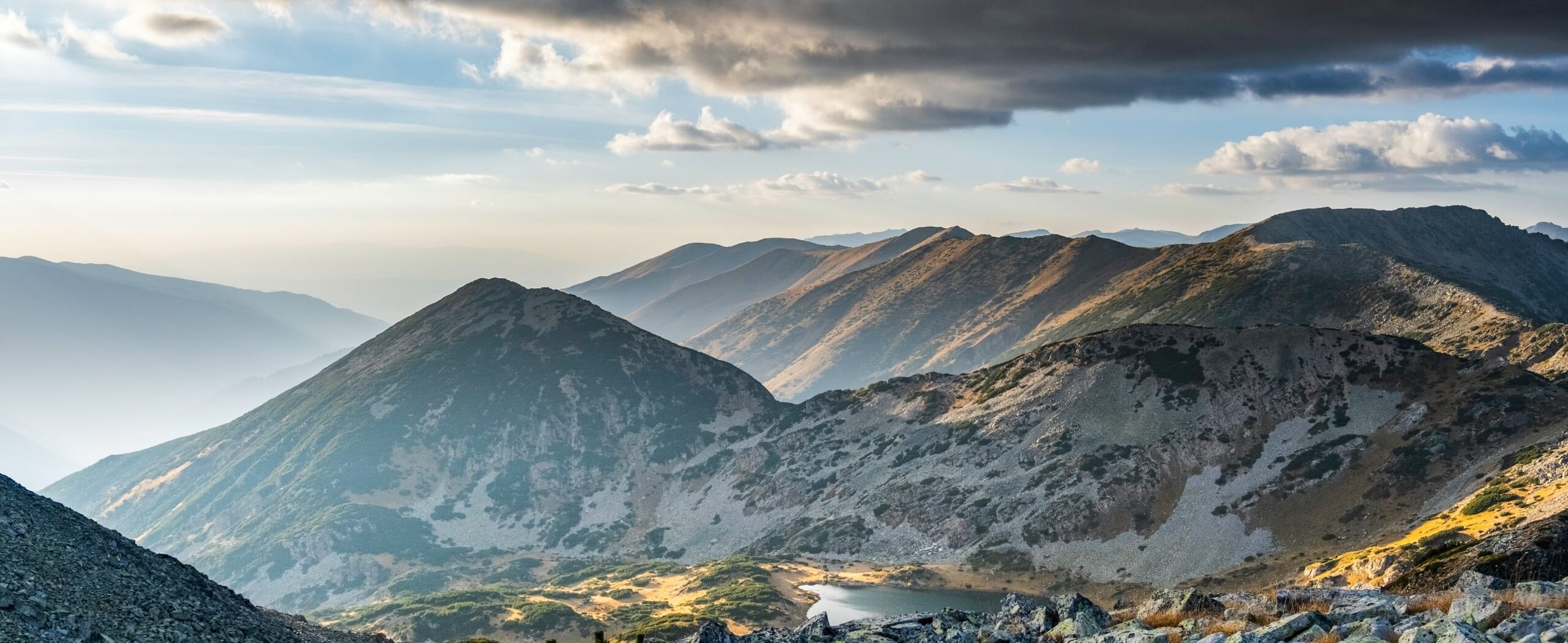


Comments